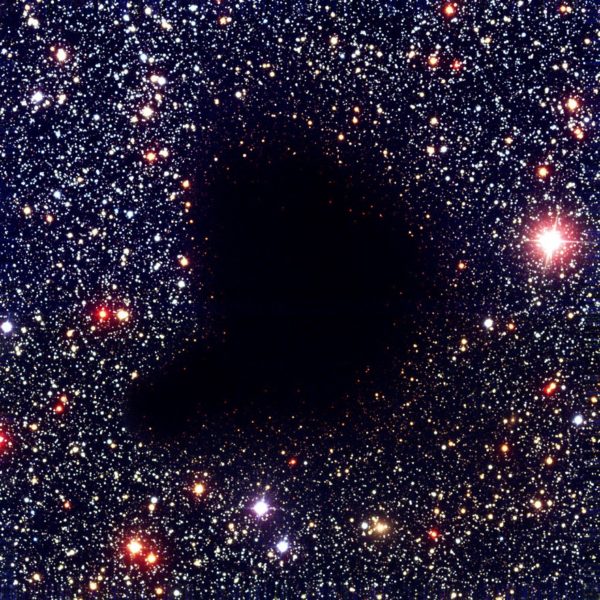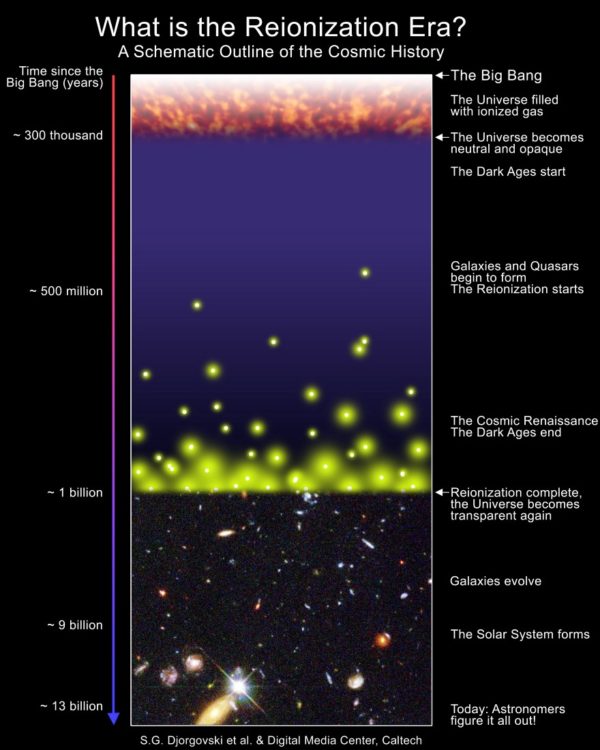“Dwell on the beauty of life. Watch the stars, and see yourself running with them.” -Marcus Aurelius
Let there be light! You’d think that would be enough: that you form stars in the Universe, you see those stars in the Universe, and that tells you about what’s out there. If only it were that simple.
 The dark nebula Barnard 68, now known to be a molecular cloud called a Bok globule. Image credit: ESO, via http://www.eso.org/public/images/eso0102a/.
The dark nebula Barnard 68, now known to be a molecular cloud called a Bok globule. Image credit: ESO, via http://www.eso.org/public/images/eso0102a/.
In order to truly see the first stars, you need a lot more that just starlight: you need that light to be able to freely travel through space. And — as bad luck would have it — visible light, the kind of light we’ve built our telescopes to see, is opaque to neutral atoms. In other words, it’s not enough to simply have a Universe full of stars; you need a transparent Universe full of stars, otherwise they’ll be invisible to our eyes!
 The reionization and star-formation history of our Universe. Image credit: NASA / S.G. Djorgovski & Digital Media Center / Caltech.
The reionization and star-formation history of our Universe. Image credit: NASA / S.G. Djorgovski & Digital Media Center / Caltech.
Are the first stars in the Universe truly invisible? Find out — and get the full story — here!

Well, yeah but......
You could just as easily say virtually every star ever is invisible to human eyes. Human eyes have not only frequency sensitivity limitations but also light gathering limits. Absent rare events like supernovas or gamma ray bursts, Deneb is the furthest easily seen star and it is only ~1500 light-years (exact distance is debated) away.
You might get away with claiming humans can see Andromeda (2.5 million light years away) even though we really can't make out any stars. If you're really stretching things an astronaut floating in space might be able to make out M83 (14.7 million light years away), but the vast, vast, vast majority of stars cannot be seen by human eyes without the aid of tools we build.
Now lets build some neutrino telescopes and lets see what this place looked like 1 second after the big bang.
"Human eyes have not only frequency sensitivity limitations but also light gathering limits."
Even if the signal is well below the noise threshold, it's still detected.
And the title doesn't say "unaided".
It depends on what you want to consider as visible.